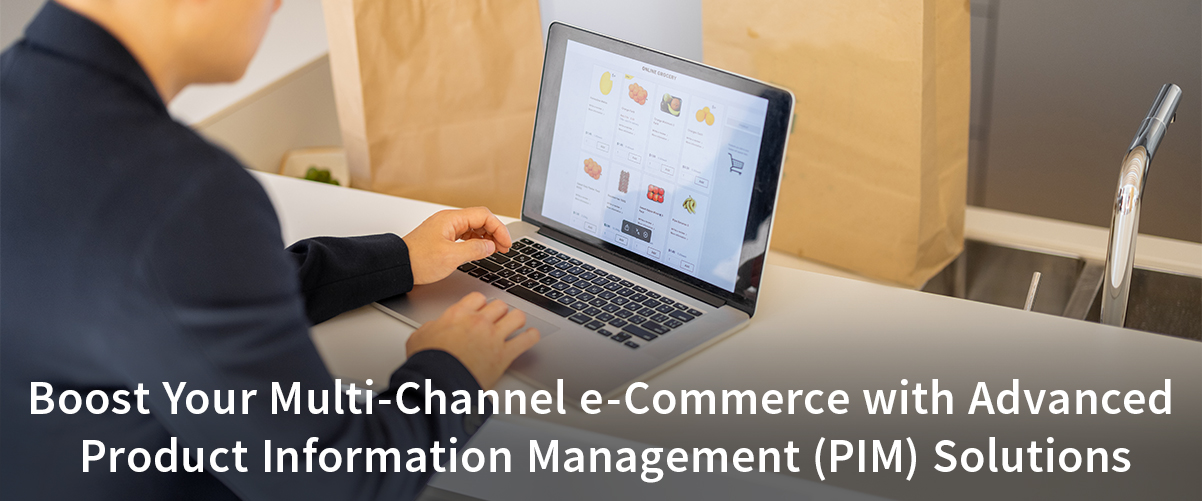
In today’s fast-paced e-Commerce world, success depends on the capacity to manage and deliver product information in a seamless manner across various channels. This is where Product Information Management (PIM) systems step in. Through centralising and structuring product data, PIM solutions enable companies to deliver consistent, accurate, and current information to customers, irrespective of the platform they shop from. Let us dive into why PIM is important for success in multi-channel e-Commerce, discuss the major advantages, and point out how ETP Unify’s PIM offerings can improve your business processes.
What is Product Information Management (PIM)?
PIM stands for Product Information Management and denotes the procedure involved in managing all the data, content, and other information used to market and sell goods. It covers product descriptions, features, pictures, videos, pricing, and additional characteristics. PIM software facilitates a central hub to control such information in an efficient way and send it over multiple sales channels like online websites, marketplaces, social media sites, and retail outlets.
Benefits of PIM Software
- Enhanced Data Accuracy and Consistency: Product Information Management System ensures that product information is accurate, consistent, and up-to-date across all channels. This minimized the risk of errors and discrepancies, leading to increased customer trust and satisfaction.
- Improved Time-to-Market: By streamlining the process of managing and distributing product information, PIM software accelerates the time-to-market for new products. This agility allows businesses to respond quickly to market demands and stay ahead of the competition.
- Better Customer Experience: Consistent and accurate product information management PIM software enhances the customer experience by providing them with the information they need to make informed purchasing decisions. This can lead to higher conversion rates and increased customer loyalty.
- Operational Efficiency: PIM solutions automate many of the manual processes involved in managing product information, freeing up valuable time and resources for other business activities. This operational efficiency can result in cost savings and improved productivity.
- Scalability: As businesses grow and expand their product offerings, a robust PIM system can scale to accommodate the increasing volume of data. This ensures that businesses can maintain the same level of efficiency and accuracy, regardless of their size.
Multi-Channel e-Commerce and the Role of PIM
In a multi-channel e-Commerce environment, businesses must manage product information across various platforms, including their websites, third-party marketplaces, social media channels, and physical stores. Each channel may have its requirements and formats for product data, making it challenging to maintain consistency and accuracy.
PIM product information software addresses these challenges by providing a single source of truth for all product information. It allows businesses to:
- Centralise Data Management: PIM systems consolidate all product data into a single repository, making it easier to manage and update information. This centralisation ensures that any changes made to product data are reflected across all channels in real-time.
- Automate Data Distribution: PIM solutions automate the process of distributing product information to various channels, reducing the risk of errors and ensuring that customers receive consistent information, regardless of the platform they use.
- Customise Data for Different Channels: Product Information Management PIM Software enables businesses to tailor product information for specific channels, ensuring that it meets the unique requirements and formats of each platform. This customisation enhances the relevance and quality of the information presented to customers.
ETP Unify: Your Key to Effortless Product Management
ETP Unify offers advanced PIM solutions designed to meet the needs of modern multi-channel e-Commerce businesses. With ETP Unify’s PIM software, businesses can efficiently manage and distribute product information across all channels, ensuring consistency and accuracy. Key features of ETP Unify’s PIM solutions include:
- Centralised Data Repository: ETP Unify’s PIM provides a single source of truth for all product information, streamlining data management and ensuring real-time updates across all channels.
- Automated Workflows: The software automates workflows for data entry, approval, and distribution, reducing manual efforts and minimising the risk of errors.
- Customisable Data Templates: ETP Unify’s PIM allows businesses to create customisable data templates for different channels, ensuring that product information meets the specific requirements of each platform.
- Integration Capabilities: The PIM system integrates seamlessly with other enterprise systems, such as ERP, CRM, and e-Commerce platforms, enabling smooth data flow and enhancing overall operational efficiency.
- Scalability: ETP Unify’s PIM solutions are designed to scale with business growth, accommodating increasing volumes of product data and supporting expanding product lines.
In conclusion, Product Information Management PIM is crucial for the success of multi-channel e-Commerce businesses. By centralising and organising product data, PIM software ensures data accuracy, enhances the customer experience, and improves operational efficiency. ETP Unify’s PIM solutions offer advanced features that enable businesses to manage and distribute product information seamlessly across all channels, ensuring consistency and accuracy. Embracing PIM solutions is a strategic move that can help businesses stay competitive in the ever-evolving e-Commerce landscape.










